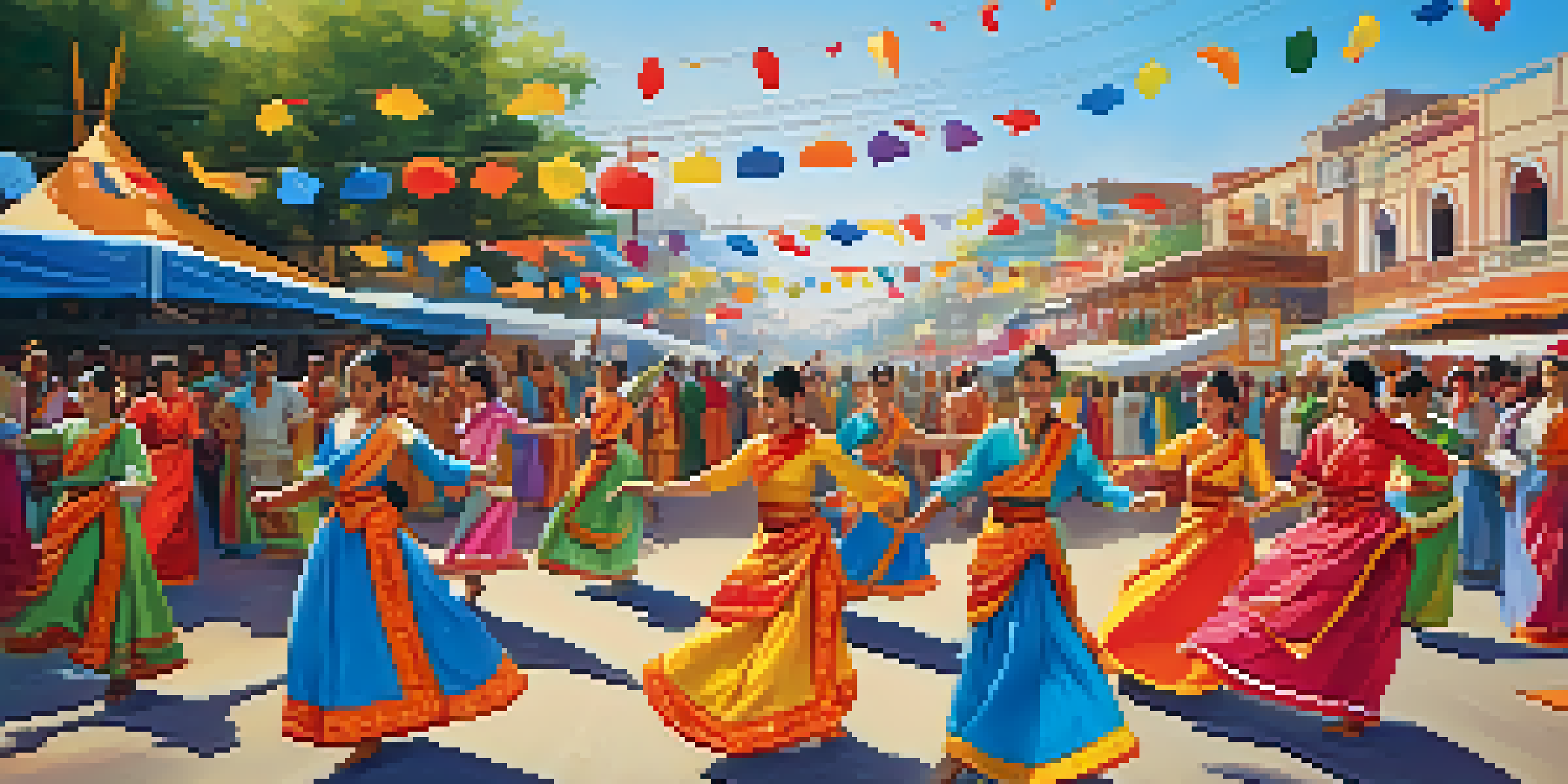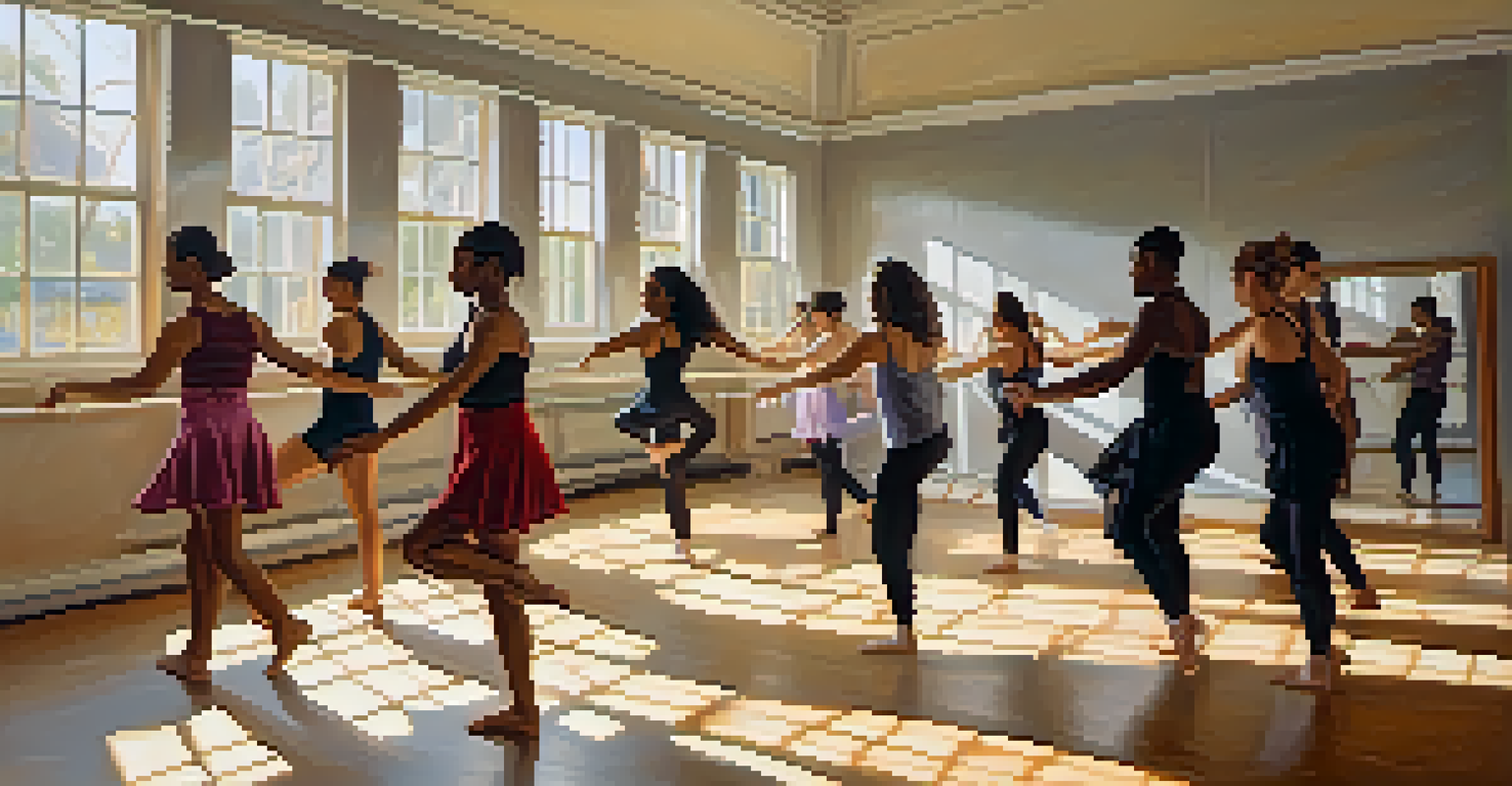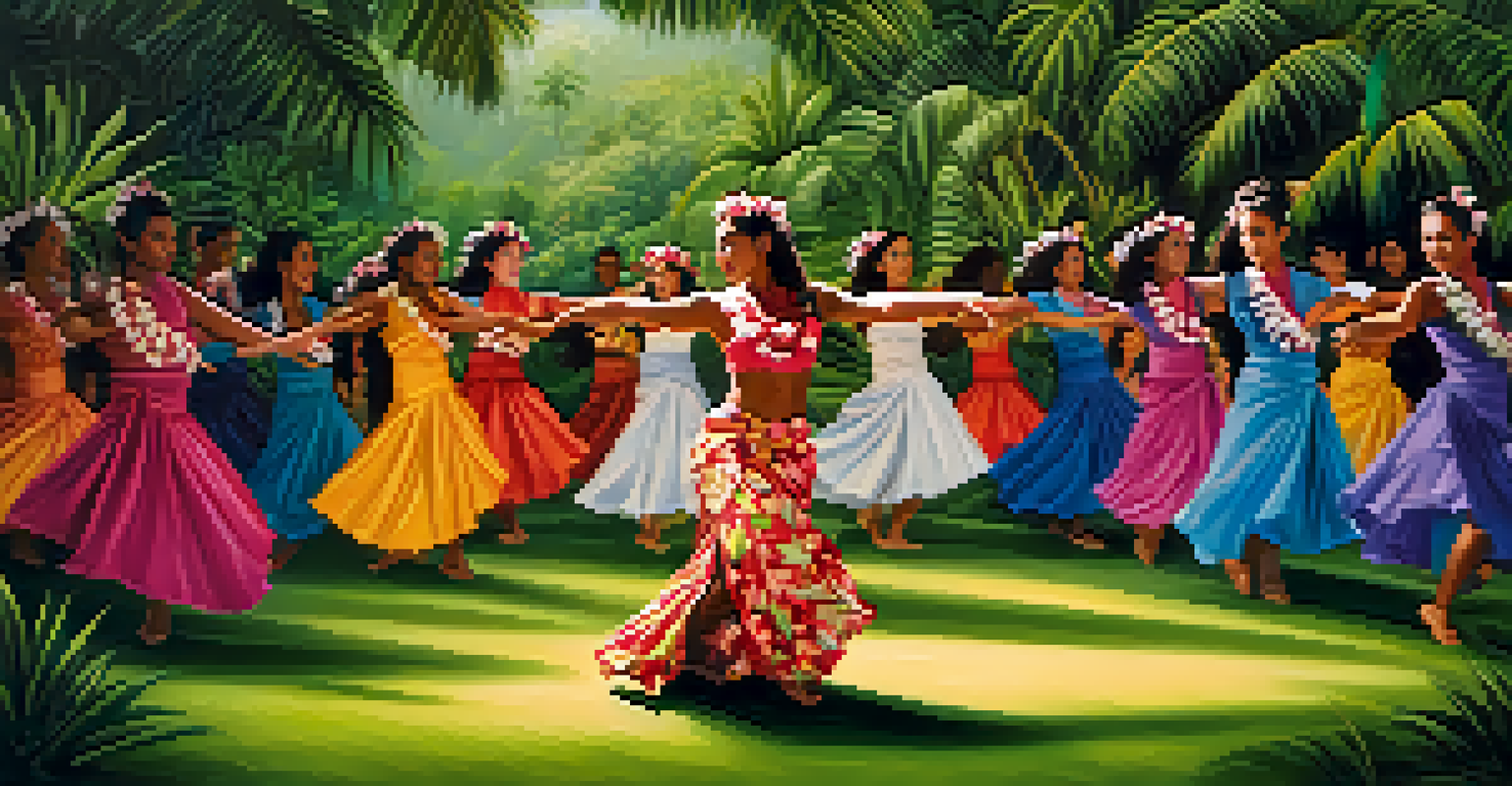Cultural Influences in Dance: A Fusion of Global Styles

Understanding Dance as a Cultural Expression
Dance is more than just movement; it's a reflection of cultural identity. Each style of dance tells a story, often rooted in the traditions, beliefs, and histories of a community. For example, the intricate footwork of Irish dance showcases the region's unique folklore and history, while the vibrant colors and rhythms of Flamenco express the passion and intensity of Spanish culture.
Dance is the hidden language of the soul.
Moreover, dance serves as a medium for social connection, allowing individuals to come together and share their cultural narratives. Whether it's a wedding, festival, or a simple gathering, dance creates bonds between people, transcending language barriers. This communal aspect highlights how dance can be a powerful tool for fostering unity and understanding among diverse groups.
As globalization continues to influence our world, the fusion of different dance styles emerges, further enriching the cultural tapestry. This blending not only brings new life to traditional forms but also encourages the evolution of dance as a living art that reflects our shared human experience.
The Impact of Globalization on Dance Styles
Globalization has transformed the way we experience dance, allowing for unprecedented cross-cultural exchanges. With the rise of social media and technology, dancers can now share their styles and techniques with a global audience, inspiring new interpretations and collaborations. For example, hip-hop dance has evolved into a worldwide phenomenon, incorporating elements from various cultures while maintaining its roots.

This increased accessibility has led to the emergence of dance fusions that blend traditional and contemporary styles. Think of Bollywood dance, which combines classical Indian dance with modern pop influences, creating a dynamic and engaging performance style that appeals to a broad audience. These fusions reflect the realities of our interconnected world and celebrate diversity.
Dance Reflects Cultural Identity
Dance serves as a powerful reflection of cultural identity, telling stories rooted in the traditions and histories of communities.
However, this blending of styles also raises questions about cultural appropriation. It's essential for dancers and choreographers to approach these fusions respectfully and with an understanding of the original cultures. By honoring the traditions while innovating, we can create a richer, more inclusive dance landscape.
Notable Dance Fusions Around the World
Several dance fusions have gained popularity, showcasing the beauty of cultural collaboration. For instance, the Brazilian Samba has embraced elements of African dance, creating a vibrant and energetic style that celebrates both heritages. During Carnival, this fusion comes alive as dancers from various backgrounds come together to celebrate diversity through movement.
The dance is a poem of which each movement is a word.
Similarly, the combination of traditional Hawaiian hula with contemporary dance forms has resulted in performances that honor the past while engaging modern audiences. This evolution not only preserves the cultural significance of hula but also invites new interpretations that resonate with today's dancers. It’s a beautiful reminder that traditions can adapt and thrive.
These examples illustrate how dance can serve as a bridge between cultures, fostering understanding and appreciation. By celebrating these fusions, we recognize the shared human experiences that unite us, making dance a powerful tool for cultural exchange.
The Role of Technology in Dance Evolution
Technology has played a pivotal role in the evolution of dance, acting as a catalyst for creativity and innovation. Platforms like YouTube and TikTok have provided dancers with a stage to showcase their talents and share diverse styles from around the globe. This accessibility allows for a fusion of ideas and techniques that may not have been possible before.
Furthermore, technology enables collaboration between dancers worldwide, leading to unique choreography that blends various influences. Virtual dance classes and online competitions have made it easier for dancers to learn from different styles and cultures, enhancing their skills and expanding their artistic horizons. This interconnectedness is reshaping the dance landscape.
Globalization Fuels Dance Fusion
Globalization has led to the emergence of diverse dance fusions, blending traditional and contemporary styles in innovative ways.
However, it's essential to remember that while technology can enhance our experience, it should complement, not replace, live interactions. The energy of a live performance or the connection felt in a group class is irreplaceable, reminding us that dance is a communal art form that thrives on human connection.
Dance as a Tool for Cultural Preservation
In a rapidly changing world, dance plays a crucial role in preserving cultural heritage. Traditional dances often encapsulate a community's history, values, and beliefs, serving as a living archive of their identity. For instance, Native American powwow dances carry significant cultural meanings, reflecting the tribes' stories and traditions.
By teaching younger generations these traditional forms, communities can ensure their heritage is not lost to time. Dance workshops and cultural festivals often become venues for passing down these important practices, fostering a sense of pride and belonging among participants. These events also invite audiences to engage with and appreciate the richness of different cultures.
In this way, dance becomes a powerful medium for cultural preservation, allowing communities to express their identity while adapting to modern influences. It bridges the gap between past and present, ensuring that the essence of a culture remains vibrant and relevant.
The Influence of Cultural Narratives on Dance
Cultural narratives shape the way we perceive and perform dance. These stories often reflect societal values, struggles, and triumphs, providing context for the movements we see on stage. For example, African dance forms often tell stories of community life, spirituality, and ancestral connections, making each performance a celebration of shared history.
Moreover, contemporary dance often addresses social issues, using movement as a form of expression and activism. Choreographers are increasingly drawing on personal and cultural narratives to create pieces that resonate on a deeper level. This storytelling aspect of dance not only entertains but also invites viewers to reflect on their own experiences and the world around them.
Dance Preserves Cultural Heritage
Through teaching traditional forms, dance acts as a vital tool for cultural preservation, ensuring communities maintain their heritage.
By intertwining cultural narratives with dance, performers can create a powerful dialogue that transcends words. This connection fosters a greater understanding of different cultures and encourages empathy among audiences, making dance a potent medium for social change.
The Future of Dance: Embracing Diversity and Inclusion
As we look to the future, the dance world is increasingly embracing diversity and inclusion. Dancers from various backgrounds are stepping into the spotlight, bringing their unique perspectives and styles to the forefront. This shift not only enriches the art form but also allows for a more authentic representation of our global community.
Choreographers are also becoming more intentional about incorporating diverse voices into their work, creating performances that reflect a multitude of experiences. This inclusivity fosters a sense of belonging for dancers and audience members alike, encouraging everyone to see themselves in the art. It's an exciting time for dance, as it evolves to mirror the richness of our world.

Ultimately, the future of dance lies in our ability to celebrate and honor cultural differences. By fostering a space where all voices are heard and appreciated, we can create a dance landscape that is vibrant, dynamic, and reflective of the beautiful tapestry of human experience.